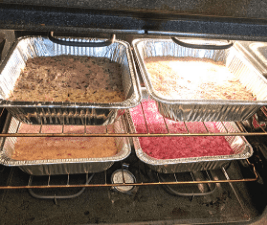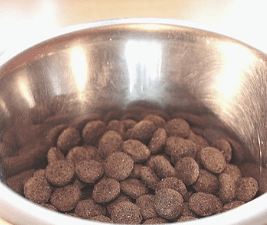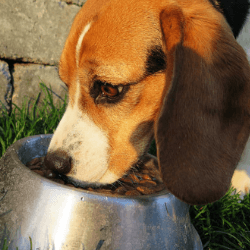What’s the best dog food?
Every once in a while we check the search engines to see what dog owners are asking the most questions about. With our decades of experience as pet-supply retailers, dog trainers, and, most important, dog owners, we want to address your biggest concerns.
An overwhelming percentage of dog owners are interested in finding the best dog food at the best value for their dogs. Many people became concerned when a rare heart issue in dogs had a possible link to grain-free foods.
Building awareness
We have seen more people interested in making their dog’s food. It’s certainly a way of controlling what your dog eats, although making sure they get complete nutrition can be a bit tricky. Dogs don’t have quite the same nutritional needs as people, and their “food pyramid” looks different from ours.
Our own five dogs eat a mixture of commercially-prepared and homemade food. Because at least one of our dogs can’t tolerate all-commercial. And we want to keep all of them accustomed to it, just in case we run out of the homemade. It’s a compromise that works for us. Our dogs are thriving.
Do what works
Dog food is such a controversial subject that we even hesitate to talk about it with our “dog friends.” Everyone seems to have such strong opinions: raw vs. cooked, homemade vs. commercial, grain vs. grain free, wet vs. dry, etc. If there are two options, people will disagree over them.
The best advice we’ve ever gotten was to go slow and see what works for you and your family, including the dog. There is no “right” answer for every dog. Every dog owner has to balance nutrition, budget, convenience, and, perhaps most importantly, what the dog likes and will eat.
Catering to Phydeaux
No dog will deliberately starve. Truly. If they get hungry enough, they’ll eat what you put in their bowl. But few people have the patience to wait them out. Seeing your dog refusing to eat for a couple of days makes devoted dog owners crazy.
Whether we’ve been lucky, or disciplined, we’re not quite sure. But we’ve never had to deal with a finicky dog. We thought we had one once, but we were mistaken. We’ve always followed the practice of leaving the food bowl down for ten minutes. After that, it gets picked up. Didn’t finish? There’ll be another meal in a few hours. Or tomorrow.
Free feeding
The one food subject that all dog professionals agree on is that “free feeding” isn’t a good idea. That’s when you leave a bowl of kibble down all the time and the dog eats what they want when they want.
While it may be convenient for some circumstances, it’s not ideal for several reasons. It makes potty training more difficult since the dog isn’t on a set consumption schedule. If there’s more than one animal in the house, it’s impossible to know who’s eating what and how much. Not to mention the food’s accessibility to pests and contaminants. And, if someone stops eating, their condition has to visibly change before you notice something’s wrong.
With scheduled feeding times, you know immediately if someone’s not eating. And you know after a couple of missed meals it may be time to visit the vet.
What to feed your dog
So what’s the best dog food? It’s the food your dog will eat. That you can afford to feed them. And that provides the nutrition they need to thrive. Dog food shouldn’t be a source of worry or guilt. Do the best you know how to do. Give dogs healthy snacks. Avoid the foods that are toxic for them (chocolate, grapes, onions).
And share your popcorn. We’ve never met a dog who didn’t love movie night.











